
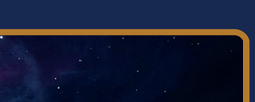
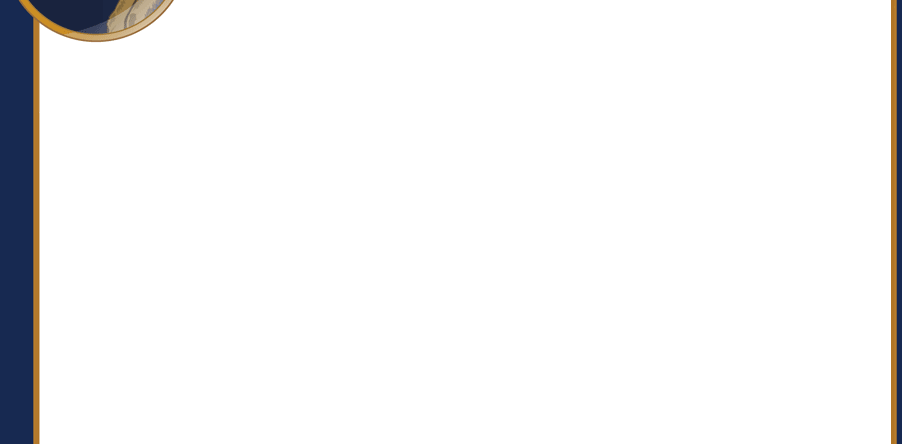
Pt. I
© Malvin Artley
|
Topics (linked to paragraphs): |
|
I recently came across an article that caught my attention, regarding plans for an attack on Iran by the US, coming possibly as soon as this month (August 2018). Defense Secretary James Mattis has since denied the claim, which came from Australian intelligence sources. This followed upon the hyperbolic tweet of Trump’s threatening Iran with apocalyptic consequences if they ever threatened the US again. Iran had done nothing of the kind. The more cynical side of me thinks that Mattis’ denial is confirmation that an attack is being planned. I have read comments in other blog sites that echo that cynicism. However, the common sense side of me says no, that an attack on Iran would be the height of stupidity.[1] But, stupider things have happened. My sense of what is taking place is an effort to get Iran to the negotiating table for a re-negotiation of the Iran nuclear deal (the JCPOA), like we saw with North Korea. The astrology of the US looks quite revealing with regard to both the yes and the no arguments for an attack, as it shows an administration under stress and with its hands tied, at least at the moment. In that sort of scenario, anything is possible. So, in this article we will take a look at Iran, its people, the reasons behind the belligerency of Washington toward Tehran, what the current administration is up against, and what a war with Iran might actually mean. We will start with Iran and its people. We will start with the astrology of the US at the moment and perhaps find some clues. The chart is below.
The current US transits: If there were to be an attack on Iran, the peak period would be the end of August when Saturn is close to its direct station square the US meridian and opposite Venus, both of which represent the sitting administration (10th house) and opposition to it (4th house). Venus also represents the military (6th house). Saturn represents the banking sector in that chart, and if there were to be an attack on Iran, the banking sector would be one of the prime suspects as to why. The US has already declared economic war on much of the world – Russia, China and Iran especially – and those three states oppose the practices of the banking sector in the US, seeking to divest themselves of dollar dominance in their affairs. Turkey is also involved in that war, too. In addition, Mars makes its direct station on the US Pluto, ruling the 12th house (the CIA, for instance, and secret services in general), and there has been talk of some sort of provocation done by covert agencies that might be an attempt to draw us into a military confrontation with Iran, or even Russia or China. No matter what would happen in such a case, all three of those nations would be involved.
This period through to the midterms in November will be very interesting to watch. Saturn turns direct in September, is exactly opposite Venus again in the first week of October, and is opposite the US Jupiter, which rules the 1st house (the public mood) around the time of the midterms in the first week of November. Saturn was first at that position in January this year and opposite Jupiter at the start of February, which should give some indications as to what we might see. In January there were questions about Trump’s sanity, whereupon he pronounced himself to be a ‘very stable genius’. That period from January – February was also when we saw the fiery rhetoric between Trump and Kim Jong-un, the Stormy Daniels story broke, and we had the announcement of the move of the US embassy to Jerusalem. Mars was conjunct Pluto on 8 May, when Trump withdrew the US from the JCPOA, just having been exact the day before. On Jun 12, Saturn was just within orb of the opposition to Jupiter, on the day of the Singapore summit, and it has been at the opposition of Jupiter and Venus since. From that time we heard that Trump gave away too much to Kim, that he ‘committed treason’ at his summit with Vladimir Putin, there was the storm over the separation of children from their parents and the US-Mexico border, the re-imposition of sanctions against Iran, the start of the trade wars in earnest from 1 June (Mars was transiting across the US south node in the 2nd house – banking – which was also a nodal return) and Trump’s memorable trip to Europe. With these points in mind, we can now move ahead and consider Iran and what might be 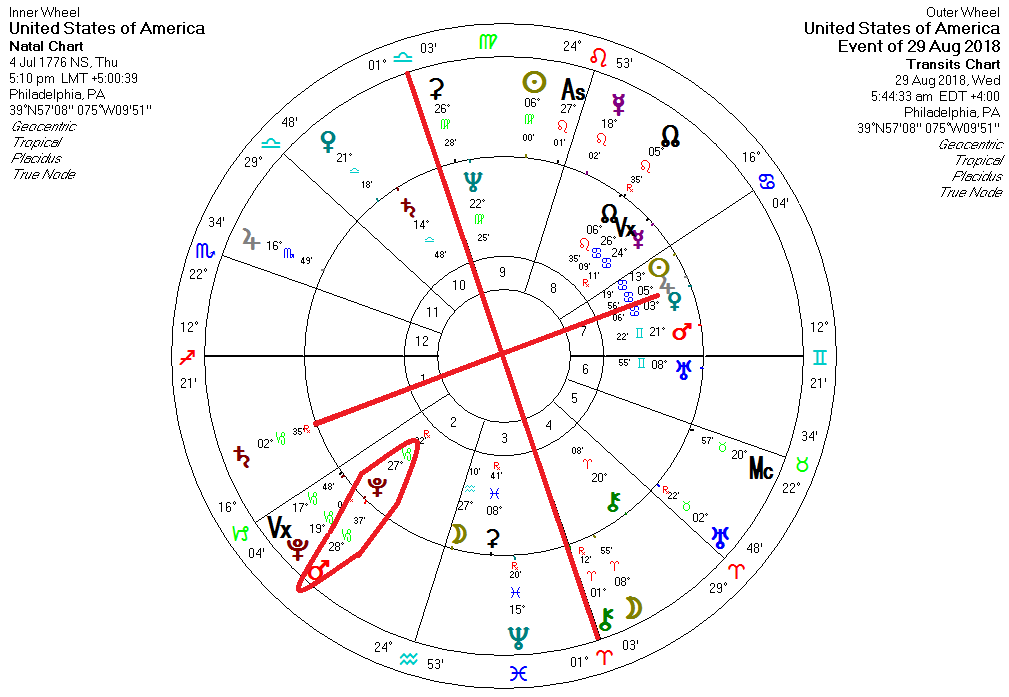 coming in the intervening months.
coming in the intervening months.
Iran, the nation: The current Iranian state is a theocratic democracy, subject to a supreme leader, who is currently Ali Khamenei. The Republic was formed after the Iranian Revolution of 1979, which ousted the Shah after 2500 years of monarchy. The Shah was a Western-backed dictator and the last monarch of Iran. The legal (de jure) definition of the Iranian government is an Islamic Republic. It is a stable nation, has regular elections, is a multicultural society and has a rich cultural history, stretching back millennia. The cultural makeup is around 90 – 95% Shia Muslim, about 4 – 8% Sunni Muslim and the remaining 2% being of various religious persuasions, including Jews and Christians. The 2% of other religions are generally tolerated in Iran. Iran was formerly known as Persia, and became ‘Iran’ in 1935, although it was only a change of name at diplomatic request. The primary religion of the nation is Twelver Shia Islam, which would be of great interest to evangelical Christians in the US. Twelver Shia posits that the last of the Twelve Imams lives in occultation (interesting, regards the twelve disciples in Christianity and ‘12s’ of all types in esotericism), and will appear with the Second Coming of Jesus. This last Imam is known as the Mahdi, and Jesus will help defend the Mahdi against the Antichrist, or false Messiah.
The main ethnic groups in Iran are Persian (61%), Azeri (14%), Kurdish (10%) and Lur (6%). The remaining percentages are of various regional derivations, including 2% Arabic. It has a high Human Development Index (HDI) on par with Mexico, Brazil and Belorussia. It is rated 17th in total land area, 18th in population, and 18th in PPP GDP in comparison to the rest of the world’s nations. Iran has a high literacy rate, on average of 90%, a strong centralized education system and produces world-class scientists and engineers. Iran was the 9th nation to develop and place a domestically-produced satellite into space, on one of its own rockets, for example. More than half of the population is under 35 years old. Its industries include pharmaceutical, aerospace, microelectronics, machine tools, shipbuilding, automotive, armaments, telecommunications, banking, oil, gas and petrochemical engineering, aviation, mining, agriculture, tourism and of course, nuclear. In other words, this is a modern, industrialized society, not some backwater, third world nation that produces only carpets and pistachios.
Iran is largely mountainous, with two large inland deserts. In fact, most of the country is arid, with only 9% of its land being arable. The western border of the nation lies on a major fault line and some of the deadliest earthquakes in history have occurred in Iran. This same fault line lies on the western border of the largest mountain range in Iran, the Zagros mountains, rising up to 4400 meters (14,500 ft.) at their highest point. To its north it is bounded by the Caspian Sea, which borders Russia and Kazakhstan directly to the north. It lines the eastern shore of the Persian Gulf, the biggest oil shipment lane in the world. It is bounded to the west by Syria and Turkey, and to the east by Pakistan, Afghanistan and Turkmenistan. It is thus of great strategic importance, as it is a gateway between the East and the Turko-Caucasian region from east to west, and between Russia and the Indian Ocean from north to south. Iran enjoys increasingly friendly relations with Russia, China, India, Syria, Turkey and parts of Iraq, and these relations are one reason why the West views Iran warily. Aside from that, Iran will also eventually be a member of the Shanghai Cooperation Organization (SCO), and it will receive wide support from the BRICS-plus program. Why, then, is Iran held in such contempt by Washington, aside from the items just mentioned?
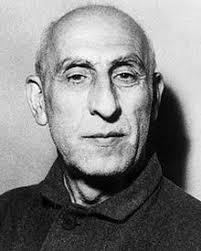
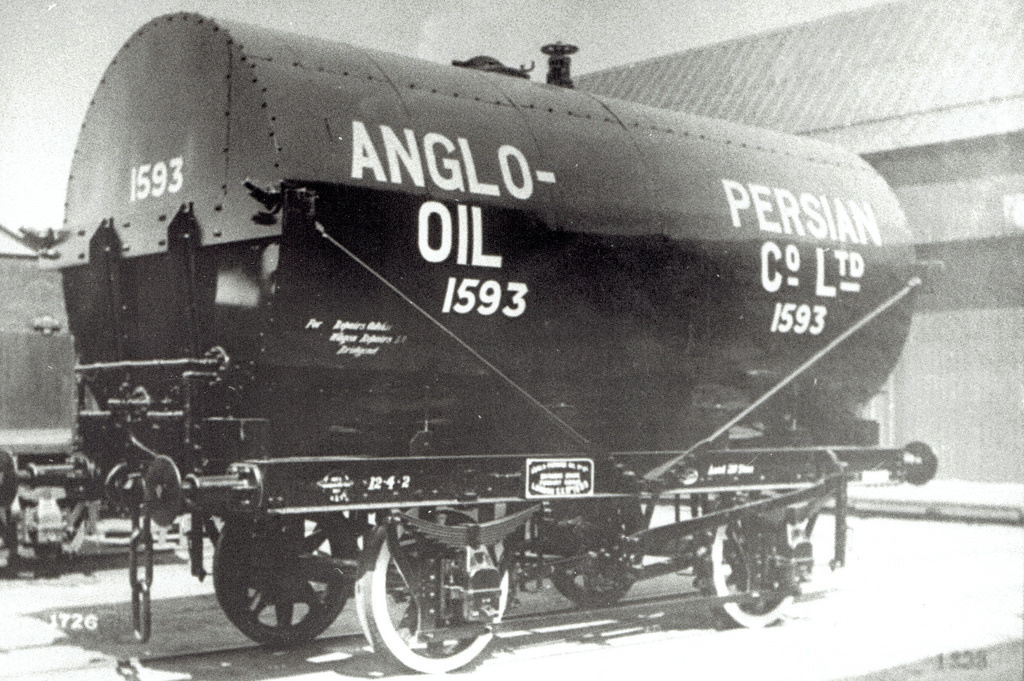 Iran’s troublous journey: Iran’s troublous journey with the West began really in 1901, when British speculator Willian D’Arcy won a concession from Iran to explore and develop the country’s southern oil reserves. Oil was discovered there in 1908, which led to the formation of the Anglo-Persian Oil Company (later to become known as BP) in 1909. The British government purchased majority shares in the company in 1914, thus taking control of the company and thereby Iran’s oil industry. And there it stayed for 37 years. A 60-year agreement signed in 1933 capped a payment of four British pounds for every ton of oil produced, also denying Iran any say whatsoever in its exports of oil. Unrest in Iran over the agreement grew until 1950, when there was a successful vote to nationalize their oil industry. In 1951 a progressive Prime Minister was elected in Iran – Mohammad Mosaddegh (b. 18 Jun 1882, Tehran) – who formed the Iranian National Oil Company (INOC) upon assuming office. Mosaddegh was a reformer, known in Iran as the champion of secular democracy and opposition to foreign rule. His policies included introducing social security, land reforms, raising of taxes, which included introducing taxation of the rent on land. But his biggest error in Western eyes was the nationalization of Iranian oil. So, in response to Mosaddegh and the Iranians, the CIA and British intelligence services engineered the 1953 Iranian Coup (the CIA’s Operation Ajax) that ousted Mosaddegh, installed a new Prime Minister and restored the monarchy under Shah Pahlavi as the Western puppet leaders in Iran. Mosaddegh was tried for treason, after being illegally deposed, served three years in prison and later died under house arrest on 1967.
Iran’s troublous journey: Iran’s troublous journey with the West began really in 1901, when British speculator Willian D’Arcy won a concession from Iran to explore and develop the country’s southern oil reserves. Oil was discovered there in 1908, which led to the formation of the Anglo-Persian Oil Company (later to become known as BP) in 1909. The British government purchased majority shares in the company in 1914, thus taking control of the company and thereby Iran’s oil industry. And there it stayed for 37 years. A 60-year agreement signed in 1933 capped a payment of four British pounds for every ton of oil produced, also denying Iran any say whatsoever in its exports of oil. Unrest in Iran over the agreement grew until 1950, when there was a successful vote to nationalize their oil industry. In 1951 a progressive Prime Minister was elected in Iran – Mohammad Mosaddegh (b. 18 Jun 1882, Tehran) – who formed the Iranian National Oil Company (INOC) upon assuming office. Mosaddegh was a reformer, known in Iran as the champion of secular democracy and opposition to foreign rule. His policies included introducing social security, land reforms, raising of taxes, which included introducing taxation of the rent on land. But his biggest error in Western eyes was the nationalization of Iranian oil. So, in response to Mosaddegh and the Iranians, the CIA and British intelligence services engineered the 1953 Iranian Coup (the CIA’s Operation Ajax) that ousted Mosaddegh, installed a new Prime Minister and restored the monarchy under Shah Pahlavi as the Western puppet leaders in Iran. Mosaddegh was tried for treason, after being illegally deposed, served three years in prison and later died under house arrest on 1967.
 Life under the Shah: After the coup a new agreement was signed in 1954 between the INOC and foreign firms which split the proceeds equally between the Iranians and the foreign investors. This led to rising unrest in the following years because it failed to deliver the promised benefits to the average Iranian. There was widespread corruption under the Shah and there was no political freedom. The Shah was an absolute monarch. The secret police (SAVAK) was his feared enforcement arm, which effectively suppressed all dissent against the regime. The upper and middle classes flourished under the Shah and in the West we are often presented with pictures that portray life then as free and open, with Western values. They did have the shallow sorts of freedoms money can buy and that guaranteed those classes would be happy with their lot – freedom of movement, of dress, access to Western culture, of ownership, etc., all so long as those did not impinge on the running of the regime. But exposure to Western culture and freedoms came with a price. Young people who traveled and studied abroad came back with other ideas about how they wanted to see their government, and communist/socialist ideas. And the people portrayed in the images of the Shah’s time that we see represented only the upper crust of the society – about 15% of the total populace. Poverty levels were at around 27% under the Shah in the earlier days, reaching 51% by 1971, military spending was high, the economy for the bulk of the population was stagnant, and the lower classes were deeply religious. The secular portion of the population represented only about 15% of the total. These are aspects of life in Iran from 1953 – 1979, the side of Iranian life under that monarchy that we are not told about in the Western press.
Life under the Shah: After the coup a new agreement was signed in 1954 between the INOC and foreign firms which split the proceeds equally between the Iranians and the foreign investors. This led to rising unrest in the following years because it failed to deliver the promised benefits to the average Iranian. There was widespread corruption under the Shah and there was no political freedom. The Shah was an absolute monarch. The secret police (SAVAK) was his feared enforcement arm, which effectively suppressed all dissent against the regime. The upper and middle classes flourished under the Shah and in the West we are often presented with pictures that portray life then as free and open, with Western values. They did have the shallow sorts of freedoms money can buy and that guaranteed those classes would be happy with their lot – freedom of movement, of dress, access to Western culture, of ownership, etc., all so long as those did not impinge on the running of the regime. But exposure to Western culture and freedoms came with a price. Young people who traveled and studied abroad came back with other ideas about how they wanted to see their government, and communist/socialist ideas. And the people portrayed in the images of the Shah’s time that we see represented only the upper crust of the society – about 15% of the total populace. Poverty levels were at around 27% under the Shah in the earlier days, reaching 51% by 1971, military spending was high, the economy for the bulk of the population was stagnant, and the lower classes were deeply religious. The secular portion of the population represented only about 15% of the total. These are aspects of life in Iran from 1953 – 1979, the side of Iranian life under that monarchy that we are not told about in the Western press.
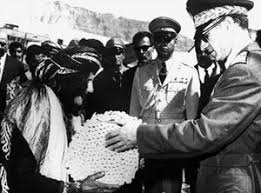 The opposition to the Shah grew in the ‘60s and ‘70s and he became increasingly isolated from the general population. He was feted in the circles of power around the world, though. He did have enough awareness to notice his growing unpopularity and he tried to institute some financial reforms that would benefit the lower classes. This was the White Revolution, from 1963 – 1978. It was instituted to supposedly weaken the institutionalized parties that opposed him. It was advertised as a step toward modernization of the society, which it accomplished to a great degree, and it was targeted at the peasant class, in hopes of gaining them as a support base against the aristocracy, clergy and middle class, who were increasingly antagonistic toward him. In short, the whole scheme backfired and instead of gaining the support of the peasants, who were deeply religious, it created landless loose political activists in their ranks, severely antagonized the landed elites and clergies, who opposed his land reforms and together with a lack of democratic reforms, contributed to the revolution which toppled him in 1979. And then came the Ayatollah Khomeini.
The opposition to the Shah grew in the ‘60s and ‘70s and he became increasingly isolated from the general population. He was feted in the circles of power around the world, though. He did have enough awareness to notice his growing unpopularity and he tried to institute some financial reforms that would benefit the lower classes. This was the White Revolution, from 1963 – 1978. It was instituted to supposedly weaken the institutionalized parties that opposed him. It was advertised as a step toward modernization of the society, which it accomplished to a great degree, and it was targeted at the peasant class, in hopes of gaining them as a support base against the aristocracy, clergy and middle class, who were increasingly antagonistic toward him. In short, the whole scheme backfired and instead of gaining the support of the peasants, who were deeply religious, it created landless loose political activists in their ranks, severely antagonized the landed elites and clergies, who opposed his land reforms and together with a lack of democratic reforms, contributed to the revolution which toppled him in 1979. And then came the Ayatollah Khomeini.
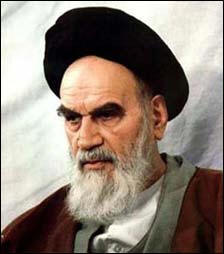 A preview of the future? The ascent of Khomeini as the supreme ruler of Iran was ushered in by the 1979 Iranian Revolution. By ousting the Western-friendly Shah, Khomeini restructured the government as an Islamic Republic, exiled many Iranians and established an anti-Western authoritarian theocracy. The revolution produced many things, among them the second oil shock in 1979, the Iran hostage crisis and the Iran-Iraq War, which produced the worst bloodshed to the time since WWII. Americans remember the hostage crisis well, as well as the long lines at the gas stations resulting from the oil shock. The panic that resulted from the decrease in oil production from Iran was all out of proportion, but it should be kept in mind when we go on to consider what might happen if there is a major conflict with Iran. The global oil supply only decreased by 4% then, but it was enough to send oil prices sharply upward, which impacted politics and global power bases worldwide and induced recessions in the US and other countries – again, a decrease of only 4%. If there is a wider conflict with Iran, such an event could affect upwards of 20% of the world’s oil supplies, affecting largely Asia, Australia and parts of Europe, at least for some months:
A preview of the future? The ascent of Khomeini as the supreme ruler of Iran was ushered in by the 1979 Iranian Revolution. By ousting the Western-friendly Shah, Khomeini restructured the government as an Islamic Republic, exiled many Iranians and established an anti-Western authoritarian theocracy. The revolution produced many things, among them the second oil shock in 1979, the Iran hostage crisis and the Iran-Iraq War, which produced the worst bloodshed to the time since WWII. Americans remember the hostage crisis well, as well as the long lines at the gas stations resulting from the oil shock. The panic that resulted from the decrease in oil production from Iran was all out of proportion, but it should be kept in mind when we go on to consider what might happen if there is a major conflict with Iran. The global oil supply only decreased by 4% then, but it was enough to send oil prices sharply upward, which impacted politics and global power bases worldwide and induced recessions in the US and other countries – again, a decrease of only 4%. If there is a wider conflict with Iran, such an event could affect upwards of 20% of the world’s oil supplies, affecting largely Asia, Australia and parts of Europe, at least for some months:
With the removal of the Shah and Western influence in Iran, a leftist, socialist economic system was put in place with a mixed economy. From reading accounts from sources who have lived in Iran, we know little of this system in the West. In effect, much of the Iranian economy is based on cooperatives. Most Western accounts of Iran talk about how weak the Iranian society and economic system is under the sanctions regime and how the ‘regime’ is likely to collapse once the sanctions really bite. That is the hope of the Washington/Israel/Saudi axis anyway. But, Iranian society is far more resilient than we are led to believe. A quick glance at the foundation chart for the current Iranian state shows the matter quite clearly.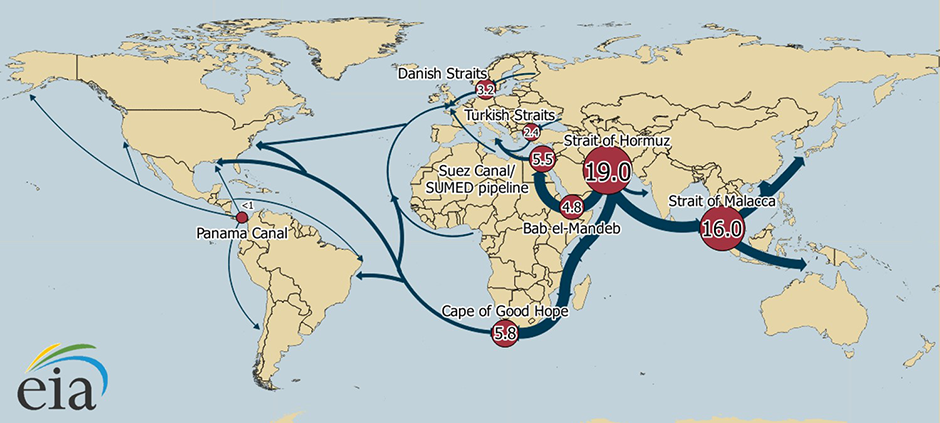
The Iranian chart : There are several main features to this chart, starting with the revolutionary Aries Sun, sitting on the 9th house cusp and ruling the Leo ascendant. It is in a wide opposition to Pluto, which rules the 4th house (the general public and opposition parties), the latter receiving a sextile from Neptune from the 5th house (parliamentarians). So, with the Leo Sun in the 9th house and in fiery Aries we see the influence of religion in the government and society, its influence through foreign affairs, its emphasis on higher education and international commerce. The revolutionary nature of the society is reinforced by the Uranus square to the horizon from the 4th house (infrastructure, domestic affairs, nationalism and patriotism), which also shows the interest in high tech and industry, further reinforced by a trine by Mars to Uranus from the 8th house (international banking and overthrows). In addition, Uranus receives a trine from Mercury, also in the 8th house conjunct Mars, with this combination of the three planets indicating a great inventiveness, capacity for original thought and pronounced independence. The latter is also 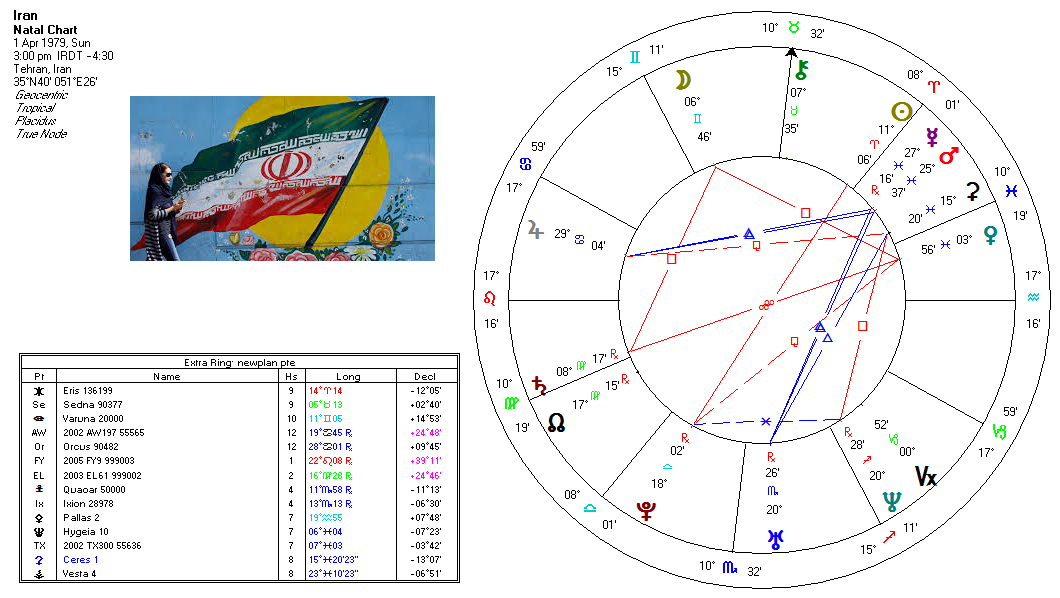 indicated by the Aries Sun/Leo ascendant.
indicated by the Aries Sun/Leo ascendant.
There is also prominent quintile activity in the chart, with the Sun being in a quintile triangle along with Jupiter and Venus. This triangle represents an unusual creative linkage between the leadership of the nation (Sun and Venus, the latter ruling the 10th house), the judiciary/religious/parliamentary institutions (Jupiter and the 5th house) and the media (3rd house). Iranians are well-informed, even though the government censors much of their content and blocks certain websites. Their internet usage has exploded since 2000 and they are ranked as one of the top 20 nations in internet usage. 70% of households have access to satellite television, and even though the media is heavily censored, people find ways around it. YouTube, for instance, is blocked in Iran. With the 4th house Uranus, the Iranian government will never be able to stamp out that sort of thing, nor will they be able to keep the outside world from the public for too long.
Perhaps the one thing for which Iran is known in the West is the heavy hand of the clerics and the very conservative approach to religion. This is indicated by a t-square, with the 10th house Moon in Gemini at the apex, and a Venus/Saturn opposition forming the base. Venus rules the 10th house and is in Pisces, which shows the religious bent of the government. With Taurus on the Midheaven it is also a dogged, determined setup, further reinforced by the opposition by Saturn to the ruler of Taurus. The t-square is not a light, happy indicator. Instead, it can indicate inhibitions, hard-heartedness, a dominating sense of duty, separations and loneliness. This also points to Iran’s human rights record, which is not stellar by Western standards. Iran has Sharia law at the core of its legal system at present, and which will persist as long as the clerics have ultimate say in the running of the country. We won’t go into human rights here, as it is not pertinent to this discussion. Needless to say, there is no nation in that region of the world that has what we would call a sterling human rights record. Perception of human rights in general varies from nation to nation, too. Iran is ranked pretty well equally with China, Israel, India and Egypt, according to the linked source. Of interest to note is that the United States is ranked only marginally better than Saudi Arabia and worse than Albania and Hungary, having seen a sharp decline since 1980. Readers can make of that what they will, but 1980 marked a period of great change in the economic policies of the US, and there was another dramatic drop after 9/11.

Continuing with the t-square in the chart of Iran, though, Saturn rules the 6th house, which represents the military and services in general – most notably here the Republican Guard, which holds a place of great control in the society and stands as a bulwark between the clerics and the populace. Thus, we see a conflicting dynamic in Iranian society, on the one hand with a strong sense of independence, inventiveness, a fascination with the greater world, as well as an egalitarian, humanistic influence, as indicated by the Uranus square the horizon from the 4th house. On the other hand this is contrasted by the t-square, which is more representative of the establishment (The West likes to call it ‘the regime’, meant pejoratively). However, that t-square also carries hidden capacity, which tends to develop later over time. The Moon/Saturn square is a powerful aspect, conferring the ability to learn deeply from experience, an ability to weather considerable difficulties and great drive and creative force once it is harnessed. This, along with the Aries Sun, and especially the Leo ascendant, gives the strong quality of resistance for which the Iranians are known, as well as their militant rejection of anything that is forced upon them from outside. And this brings us to the Basij.
The Basij : The Basij is an organization in Iran about which we know next to nothing in the West. There is only one book in English that describes it, and that one has a decidedly anti-government slant. It was written by an Iranian expat who lives and teaches in the US. A thumbnail sketch shows the Basij to be somewhat the Iranian equivalent of the US National Guard. It was initially formed as a resistance group by the Ayatollah Khomeini after the 1979 revolution in order to ensure the survival of the revolution. Western sources class it as a tool for suppression and control in Iranian society, which it is sometimes. It was employed to suppress protests after the 2009 election was contested in Iran, for instance. Otherwise, it is relatively quiescent. Its stated purpose, from Article 151 of the Iranian Constitution,…“obliges the government to provide a program of military training, with all requisite facilities, for all its citizens, in accordance with the Islamic criteria, in such a way that all citizens will always be able to engage in the armed defense of the Islamic Republic of Iran.” That was just after the revolution. Now its ranks are filled by volunteers which are vetted by community and religious groups. But, in times of great crisis, such as we may be about to see in Iran, the Basij is mobilized to keep order, to aid in disaster relief, to aid in reconstruction, such as in the case of earthquakes, violence and the like, as support of the Republican Guards, as community support, and so forth. Reports of its membership vary widely, from a low of 90,000 to as high as 17 million.
The full name for the Basij is, Niruyeh Moghavemat Basij, meaning ‘Organisation for the Mobilisation of the Oppressed’. ‘The Oppressed’ refers to Iranian society oppressed by outside influences. The Basij was incorporated into the Republican Guard in 2007, although it is primarily the latter which is employed in suppression of violent protests, as we are starting to see now. That violence is probably instigated by outside interests as well, such as the MEK, discussed next. As it is now, the Basij is integral to the politico-economic structure of Iran and its main purpose at the moment, aside from provided for the national defense in times of emergency, is to raise the lot of the lower classes. Only a small percentage of the Basij is involved in any type of military or police work at present. Iran is a socialist society. One of the primary roles of the Basij is to raise the lot of the poor in Iran. The Basij has something akin to what we know as the ‘GI Bill’ in the US, in that membership in the organization entitles one to educational advantages, among other perks. “40% of undergraduate and 20% of post-graduate university admissions are reserved for Active-level Basij members.” (from the ‘main purpose’ link) Most of the Basij membership is from the lower classes. This is a big incentive for membership, and it is government subsidized. As an indicator, Iranian government programs have grown the middle class in Iran from 5% at the time of the revolution, to 30% as of today’s figures. This comes at a time when the US middle class is shrinking.
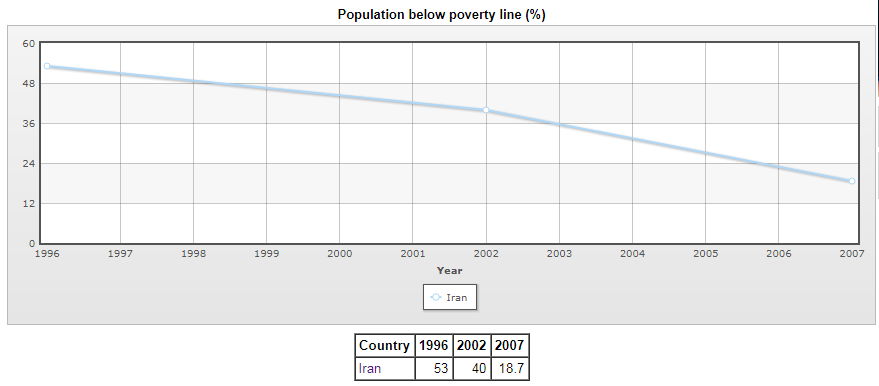 Of course, poverty figures (above) vary according to method and source. Pro-Western sources I have seen place Iran’s poverty rate as high as 80% (I would tend to doubt that), whereas the World Bank listed it as around 8% in 2013. That 8% figure follows on the from graph above. We can see, then, that Iranian government policy has benefitted the most disadvantaged (‘oppressed’) among Iran’s populace, and the Basij has played its part in that. As an example of socialism, my father got his university and post-graduate education through the GI Bill (yes, that is a form of socialism), and prior to his military service in WWII he was among the lower classes, having just come through the Great Depression. He went on to a middle class life. His is just a small example of what socialism can do. Yet, ‘socialism’ is a dirty word in the US. But, I digress.
Of course, poverty figures (above) vary according to method and source. Pro-Western sources I have seen place Iran’s poverty rate as high as 80% (I would tend to doubt that), whereas the World Bank listed it as around 8% in 2013. That 8% figure follows on the from graph above. We can see, then, that Iranian government policy has benefitted the most disadvantaged (‘oppressed’) among Iran’s populace, and the Basij has played its part in that. As an example of socialism, my father got his university and post-graduate education through the GI Bill (yes, that is a form of socialism), and prior to his military service in WWII he was among the lower classes, having just come through the Great Depression. He went on to a middle class life. His is just a small example of what socialism can do. Yet, ‘socialism’ is a dirty word in the US. But, I digress.
Stepping back from the idea that the Basij is first and foremost a militia used as an arm of control for conservatives in ‘the Iranian regime’, a more Iranian view is that (from a previous link), “The Basij is a group which serves as a government-supported welfare and affirmative action program, with the majority of its members hailing from the lower classes, in return for supporting and propagating the ideals of the 1979 Revolution and Iranian constitution.” So, here is a question: Is that much different from affirmative action programs in the US and other Western countries or groups that promote our ideas of democracy, promote patriotic sentiments and indoctrinate us to uphold our constitutional principles? I grew up in the middle of the ‘Bible Belt’ in the US, where religion was strong, conservatism was king and you didn’t speak out too much if you wanted to be ‘an acceptable member of society’. Even having long hair in those days (as a man) was enough to knock one out of job prospects, and one didn’t talk about socialism or communism except in pejorative terms in public – not unless you were spoiling for an argument, or worse.
For Iran in time, though, the need for the Basij will wane as more and more of the lower classes achieve better lives. The upper and middle classes do not need what the Basij has to offer. That does not mean, however, that the ranks of the Basij would not swell if a foreign power were to intervene in Iran. Just as in any country where patriotism is strong, the masses would quickly mobilize in defense of the realm, and one can probably expect that it would be not different in Iran. And that takes us to the second part of this article: Why the West wants to intervene in Iran and what that would likely mean.
Picture credits:
[1] Starting about 6:10 – 8:50
